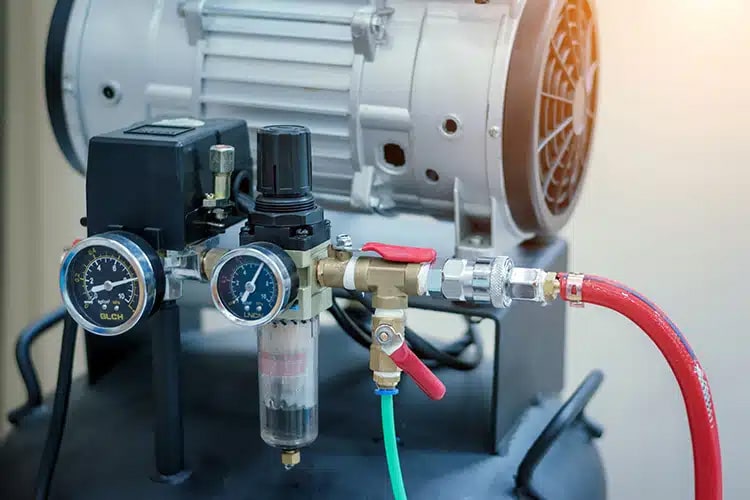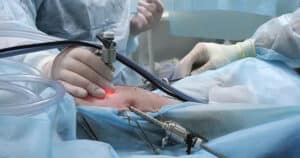
What is Fluid Mechanics?
A branch of physics that analyzes the behavior of liquids and gases, fluid mechanics is a critical engineering principle concerned with the study of forces and motion in fluids. Fluid mechanics reveals the effects of pressure, velocity, density, viscosity, and other properties on the fluid’s behavior.
There are two main subfields of fluid mechanics. The first is fluid dynamics, also known as hydrodynamics, which studies fluids in motion, including how fluids flow and the forces acting on them. Fluid statics, also known as hydrostatics, is the other major subfield. It deals with fluids at rest, namely how pressure varies within a static fluid and how forces are transmitted through it.
While these principles have numerous applications, here we’ll focus on the role of fluid mechanics in medical device design, development, and testing.
Principles of Fluid Dynamics (Hydrodynamics)
A complex field, fluid dynamics explains how liquids, gases, and plasmas move under various forces. This can range from the flow of blood in the human body to the flow of air into the lungs.
Here are some of the main principles that form the basis for fluid dynamics and are used to design and analyze a wide variety of systems:
Bernoulli’s Principle
Bernoulli’s Principle explains that an increase in the speed of a fluid occurs simultaneously with a decrease in pressure or a decrease in the fluid’s potential energy. Bernoulli’s Principle explains the pressure-velocity tradeoff in fluid flow, playing a crucial role in devices like venturi flow meters used in respiratory equipment to measure airflow rates.
Poiseuille’s Law
Poiseuille’s Law states that the flow rate of fluid through a tube is proportional to the fourth power of the radius of the tube and the pressure difference between the ends, and inversely proportional to the length of the tube and the viscosity of the fluid. This is especially relevant in devices like catheters, IV lines, and blood vessels themselves, where understanding the resistance to flow is critical.
Reynold’s Number
Rynold’s Number is a dimensionless number that is used to predict the onset of turbulence in a fluid flow. It’s a ratio of inertial forces to viscous forces and is important in designing any medical device where fluid flow is critical, such as stents, heart valves, and blood pumps.
Laminar and Turbulent Flow
Laminar and turbulent flow describe different flow regimes that can occur in a fluid. The Laminar flow is smooth and orderly, while turbulent flow is chaotic and can cause mixing. In medical devices, maintaining laminar flow can be important to prevent damage to blood cells or tissues, to ensure accurate delivery of fluids, or to prevent clot formation.
Shear Stress
Shear stress is produced by the motion of a fluid across a surface, such as the interior wall of a blood vessel or catheter. High shear stress can potentially damage cells or tissues, or encourage the formation of blood clots.
Flow Rate
Flow rate refers to the volume of fluid passing a point per unit of time, and is crucial in many medical devices, from infusion pumps to dialysis machines, and even in understanding the flow of blood through the heart and blood vessels.
By understanding and applying these principles of fluid dynamics, design engineers can develop medical devices that safely and effectively interact with the body’s fluids.
Principles of Fluid Statics (Hydrostatics)
Similarly, hydrostatic principles have several important implications for the design and operation of medical devices. Here’s how some of those principles apply:
Pascal’s Principle
Pascal’s Principle explains that a change in pressure at any point in an enclosed fluid at rest is transmitted undiminished to all points in the fluid. Fundamental to the operation of various medical devices, such as infusion pumps and hydraulic patient lifts, the principle is also key to understanding and controlling the pressure in devices that are filled with fluid, such as some types of catheters or implantable drug delivery systems.
Archimedes’ Principle
Archimedes’ Principle states that an object submerged in a fluid experiences an upward buoyant force equal to the weight of the fluid it displaces. This principle is crucial in the design of implants and other devices that need to function while submerged in body fluids. For instance, it affects the buoyancy and stability of artificial joint replacements and even intraocular lens implants.
Hydrostatic Pressure
Hydrostatic Pressure of a fluid increases with depth, due to the weight of the fluid above the point of measurement. In medical devices, understanding hydrostatic pressure is important for managing fluid levels in devices like intravenous (IV) drip systems, or for accurately measuring body fluid pressures, like in a spinal tap or blood pressure monitor.
Fluid State Equilibrium
Fluid Static Equilibrium states that when a fluid is at rest, it is in a state of fluid static equilibrium, meaning the pressure is the same in all directions. For a medical device, such as a catheter or a bladder pressure measurement device, it’s essential to understand this to correctly interpret pressure readings.
Fluid Density
Fluid Density, coupled with gravity and the height of fluid, determines the pressure exerted at a certain depth. This is especially important when designing devices that need to inject or draw fluid from the body, like a syringe or a dialysis machine.
Equally as important as hydrodynamics, hydrostatic principles are foundational to understanding and designing many types of medical devices that interact with fluids. From ensuring proper function to accurately interpreting readings, these principles guide the development of safe, effective, and reliable devices.
Applying the Principles of Fluid Mechanics to Medical Device Design
Engineering and design teams actively employ fluid dynamics principles to enhance their understanding and management of fluid behavior in a myriad of medical applications.
Laparoscopes and endoscopes, for example, use fluid flows for various functions, like clearing the surgical area or inflating body cavities for better visibility. Drug delivery systems also rely on fluid dynamics principles to determine the flow rate of fluids in IV systems; specifically, understanding how changes in tube diameter, fluid viscosity, or pump speed can affect the delivery rate of medications to the patient. Artificial heart valves, stents, heart pumps, and other cardiovascular devices must also be designed to handle the dynamic flow of blood and not disrupt the natural rhythm or cause any damage to blood cells.

A veterinary operating team performs laparoscopic sterilization on a dog.
Design engineers must understand how fluids interact with medical devices and surgical tools, taking into account a variety of interrelated factors.
Lubricity and Surface Roughness
One of the key roles of biocompatible coatings is to increase lubricity, a measure of the degree to which a substance, such as a lubricant, reduces friction between surfaces in contact with each other. This is particularly important in devices like catheters, guidewires, or stents, which need to move smoothly within the body’s vascular system.
Lubricity considers factors like the surface properties of the materials in contact and the operating conditions, which can include temperature, pressure, speed, and load. As a result, lubrication studies often require a combination of fluid mechanics (both statics and dynamics), materials science, and tribology, which studies friction, wear, and lubrication. Surface engineers create hydrophobic coatings like ME-92® and AL-COAT® to repel fluids, ensuring smooth sliding surfaces and a lower coefficient of friction.
Corrosion Resistance
In the context of fluid mechanics, corrosion can occur when a medical device or surgical instrument comes into contact with a fluid, like blood or water. Various factors, including the type of material, type of fluid, electromechanical conditions, and mechanical stress, all influence the rate of corrosion. ME-92 Operations was the first chrome coating company to perform and pass the Tripartite Guidelines testing for biocompatibility. ME-92® biochrome coatings arrest corrosion, maintaining surface integrity after repeated sterilization cycles.
Thromboresistance
The principles of fluid dynamics—specifically blood flow—play a crucial role in influencing clot formation, thereby significantly affecting a material’s ability to resist blood clotting, also known as its thromboresistance, when it comes into contact with blood.
Two key principles influence clot formation: the force per unit area exerted parallel to the flow direction, known as shear stress (discussed above), and the amount of time that blood spends in contact with a surface, known as residence time.
The shape and surface properties of medical devices can also influence blood flow patterns, shear stress, and residence time. As a result, surface treatments, as well as material selection, are key to medical device design. Materials and coatings that discourage protein and platelet adhesion can help prevent clots. These can include hydrophilic coatings like ME-92® and AL-COAT®. Both have met ASTM Hemolysis (ISO 10993-4) requirements to evaluate the adverse effects of blood-contacting medical devices or biomaterials on blood or blood components. The effects evaluated include adverse reactions such as thrombosis and other blood-associated adverse events.
A critical design component for medical devices and surgical tools, biocompatible coatings like ME-92® and AL-COAT® not only improve the physical appearance of medical instruments but also, more importantly, provide functionality critical to their performance. For decades, the medical industry has utilized ME-92® and ALCOAT® biochrome coatings to reduce friction and wear, take advantage of easy-cleaning and nonstick coating properties, and of course, be non-reactive to the body.
Biocompatible coatings for Medical Device Design
Today, ME-92® Coating offers the most versatile lineup of biochrome coating options for medical device and surgical instrument design. At the Armoloy Innovation Center in Dekalb, IL, metallurgical consultants aid in developing coating solutions to meet strict regulations and quality control standards. Our metallurgical and materials consulting, research, and testing experts are here to help you determine the right coating and finish to meet your specific needs.